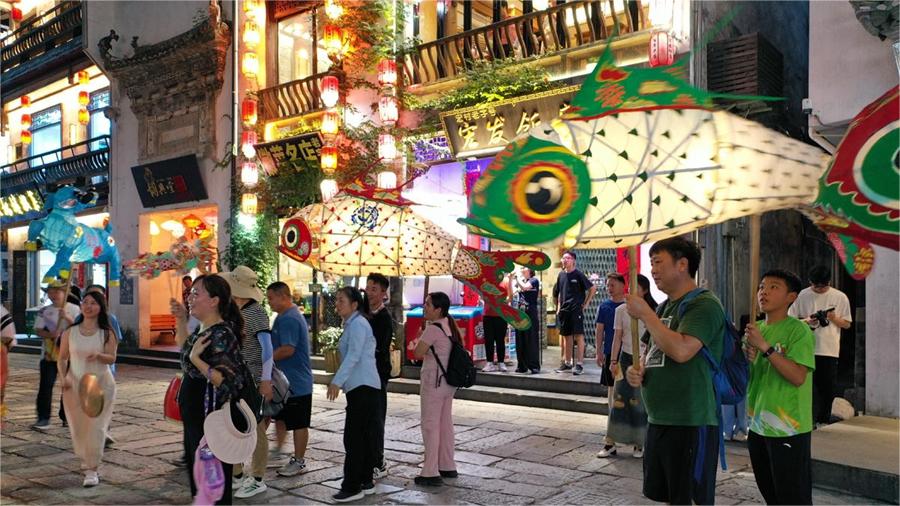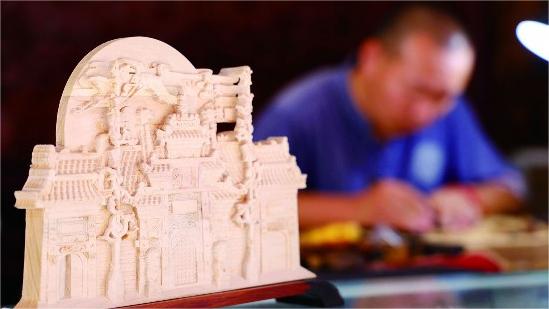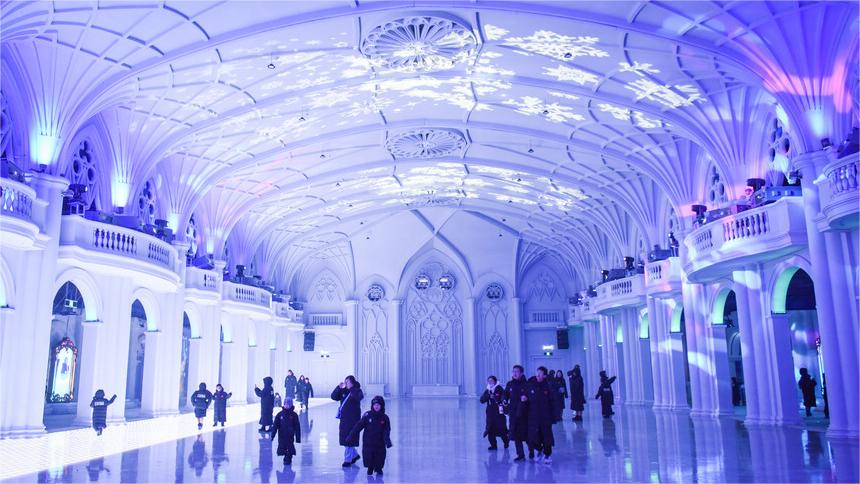Summer tourism offers diverse immersive experiences
On a summer night, thousands of tourists gathered around a 600-square-meter Chinese national flag, singing the song “Ode to the Motherland” at Mingsha Mountain in Dunhuang, northwest China’s Gansu Province.
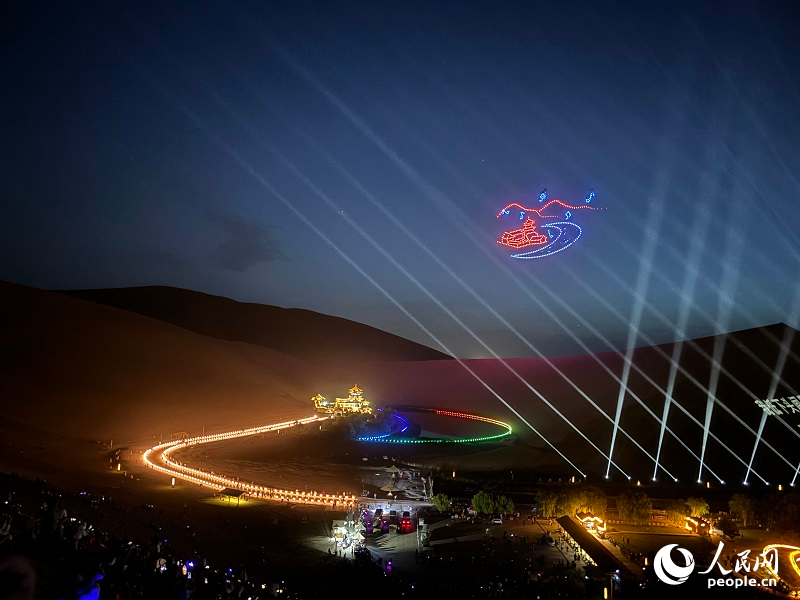
Photo shows a drone performance at Mingsha Mountain in Dunhuang, northwest China’s Gansu Province. (People’s Daily Online/Zhao Wen)
The outdoor concert combined the natural beauty of Mingsha Mountain and the Crescent Spring scenic spot with music, providing visitors with an immersive experience, transcending the boundaries between scenic spot and concert venue. The innovative tourism model reflects the revitalization and diversification of China’s cultural and tourism industry.
Turning the journey into the destination
Driving along the new tourist road project at Qinghai Lake, in northwest China’s Qinghai Province, tourists are treated to a breathtaking view: fields of golden flowers in full bloom, with the azure blue waters of Qinghai Lake stretching to the horizon, blending with the sky. Tourists traveling by car can't resist stopping to take photos, marveling at the scenery.
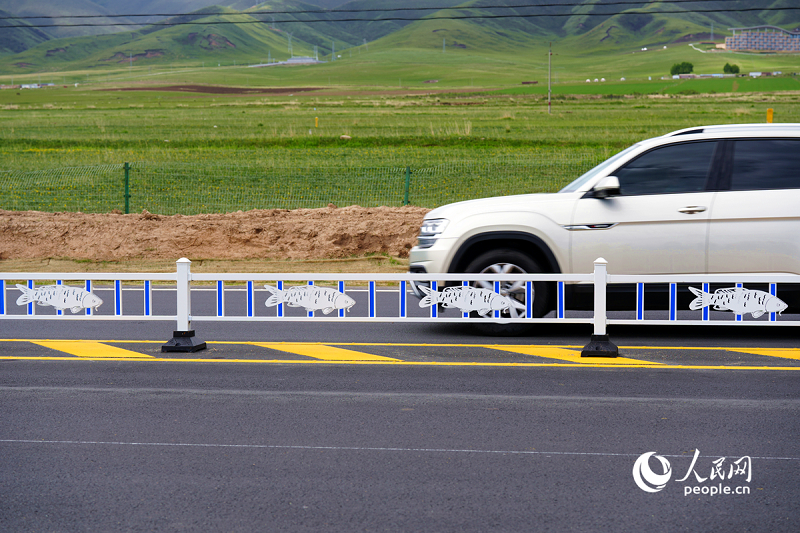
Photo shows road barriers featuring patterns of the naked carp, which is endemic to the Qinghai Lake. (People’s Daily Online/Yang Qihong)
The road project, in its first stage, incorporates elements related to the lake into the road barriers and signs, turning the road into a part of the tourist attraction.
On July 17, a train departed from Longjing Railway Station to Changbaishan Railway Station, in Yanbian Korean Autonomous Prefecture, northeast China’s Jilin Province, carrying 160 tourists on a summer retreat. The five carriages of the train were decorated with themes from various folk cultures of China’s northeast.
Along the journey, the tourists enjoyed pristine forest scenery, experienced local culture, and savored delicious cuisine.
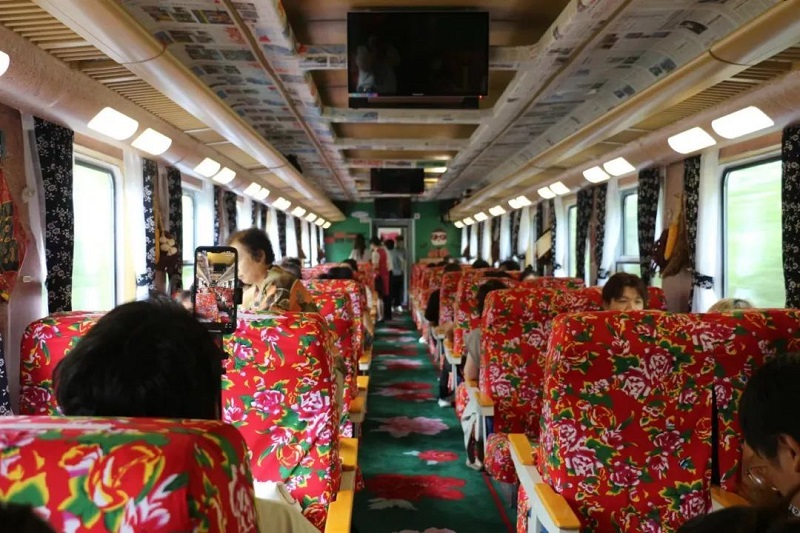
Photo shows the interior of a folk tourism-themed train in northeast China's Jilin Province. (Photo courtesy of the Department of Culture and Tourism of Jilin Province)
In recent years, various places have integrated regional transportation and cultural tourism resources, introducing innovative products and routes that combine transportation and tourism. These include leisure trails, car campsites, scenic highways, and scenic railways. These efforts make the journey itself a tourist destination.
Using emotion to elevate experiences
According to a press conference held by China’s Ministry of Culture and Tourism, over 37,000 cultural and tourism consumption activities will be held across the country this summer.
Chinese museums are embracing new technologies to offer visitors a more engaging and immersive experience. Through cutting-edge technologies, visitors can go beyond being observers and become active participants, gaining a renewed appreciation for traditional culture.
At Jiangsu’s Museum of Traditional Chinese Opera, an exhibition themed around opera allows visitors to “open their eyes and enter the world of opera” in a virtual space, experiencing the beauty of Kunqu Opera.
At the Confucius Museum in Qufu, Shandong Province, visitors can interact with Confucius by touching questions on a screen, as if conversing with him across time.
At Hunan Museum's “The Art of Life: Multimedia Exhibition of Mawangdui Han Culture,” visitors are immersed in the "from earth to heaven" ritual depicted in the T-shaped silk painting from the Mawangdui Han Tomb through a giant LED spherical screen and holographic projections.
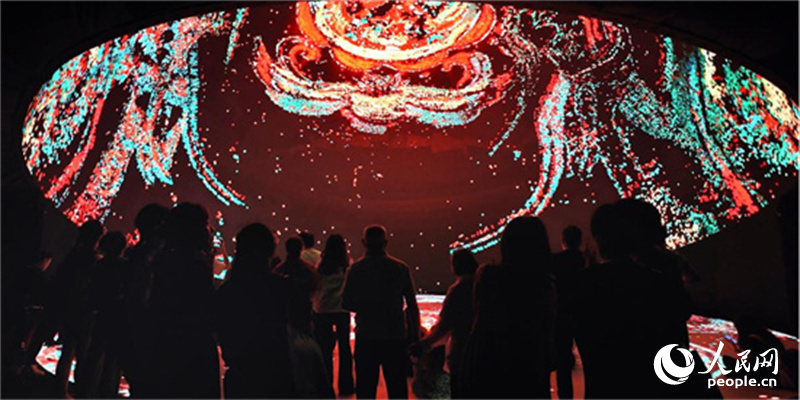
Visitors stand under a giant LED dome at Hunan Museum in Changsha, central China’s Hunan Province. (People’s Daily Online/Liu Wei)
These examples and the new technologies that make them possible have completely changed the museum going experience. Visitors are transformed from observers to participants, gaining new immersive experiences and a deeper understanding of traditional culture.
Southwest China’s Guizhou Province capitalizes on its numerous bridges to offer thrilling activities like bungee jumping, high-altitude swings, and rapid descents. This allows visitors to experience the adrenaline rush of extreme sports while appreciating the breathtaking canyon views.
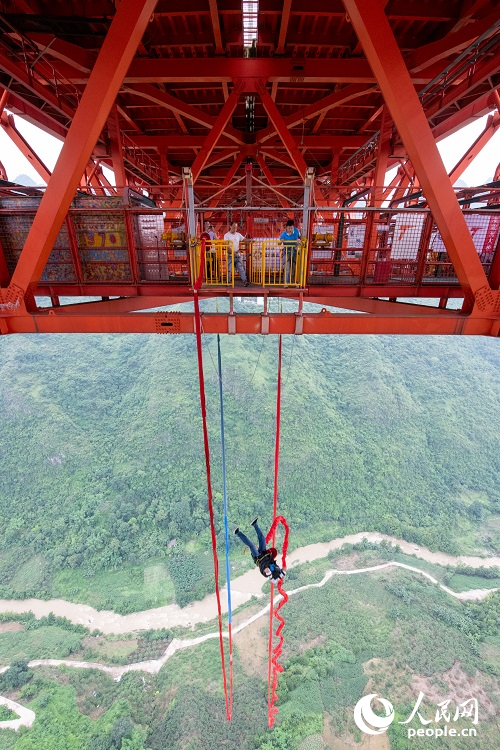
A tourist experiences bungee jumping at Baling River Bridge in southwest China’s Guizhou Province. (People’s Daily Online/Weng Qiyu)
These experiences all play on the emotions of visitors, creating memorable and amazing memories that elevate the cultural and tourism industry.
Tourism driving night economies
Night economies thrive on an atmosphere of bustling activity, but they also rely on more than just that. Many places have implemented policies and measures to encourage innovation to accelerate the development of nighttime tourism, meeting the growing nighttime cultural and tourism demands of both tourists and residents.
Immersive performances and night tours are driving the transition from "night tourism" and "night performances" to "night commerce." Many tourist transit points are becoming destinations in their own right, and the summer nighttime economy is being upgraded, further releasing the vitality of the "night economy."
“Authenticity is the ultimate skill in receiving tourists," said Li Ying, director of the Mingsha Mountain and Crescent Spring Scenic Area Service Center. “In the past, many people’s itinerary in Dunhuang included a morning visit to the Mogao Caves, an afternoon at the Crescent Spring, and then leaving in the evening. Now, with the creation of night concerts, more tourists choose to stay longer in Dunhuang."
Shops on Saishang Old Street in Hohhot, north China’s Inner Mongolia Autonomous Region, present a wide range of exquisite handicrafts from various ethnic groups. These captivating displays offer tourists a glimpse into the cultural allure of the ethnic groups.

Photo shows a piece of exquisite felt pyrography work displayed at a store on Saishang Old Street in Hohhot, north China’s Inner Mongolia Autonomous Region. (People’s Daily Online/Kou Yanan)
Dai Bin, director of the China Tourism Academy, stated that in the past, people’s understanding of tourism was limited to “seeing mountains, waters, and scenery.” Today, the integration of culture and tourism is driving the transformation and upgrading of the tourism industry.
Today, tourists not only appreciate scenic beauty but also immerse themselves in a richer travel experience. Cultural events such as art festivals and concerts have emerged as an important driving force for the high-quality development of the tourism sector, Dai said.
Photos
Related Stories
- Upgraded rural tourism becomes highlight of domestic trips in China
- How trendy "China Travel" shatters myths, bridges cultures
- Township trip trendy among desk jockeys seeking relaxation, not ‘consumption downgrade’ but new economic opportunities
- Visa-free policy to invigorate tourism cooperation between HK, Hainan: HKSAR gov't
- China revs up hospitality, boosts services to ride "China Travel" boom
- China sees 14.3 percent more domestic trips in H1
- Chinese tourist arrivals to Mongolia jump in H1 2024
- China to facilitate accommodation for foreign travelers
- Local authorities in SW China leverage ethnic features to boost summer tourism
- Haiping Yi ethnic cultural township sees summer tourism surge
Copyright © 2024 People's Daily Online. All Rights Reserved.






